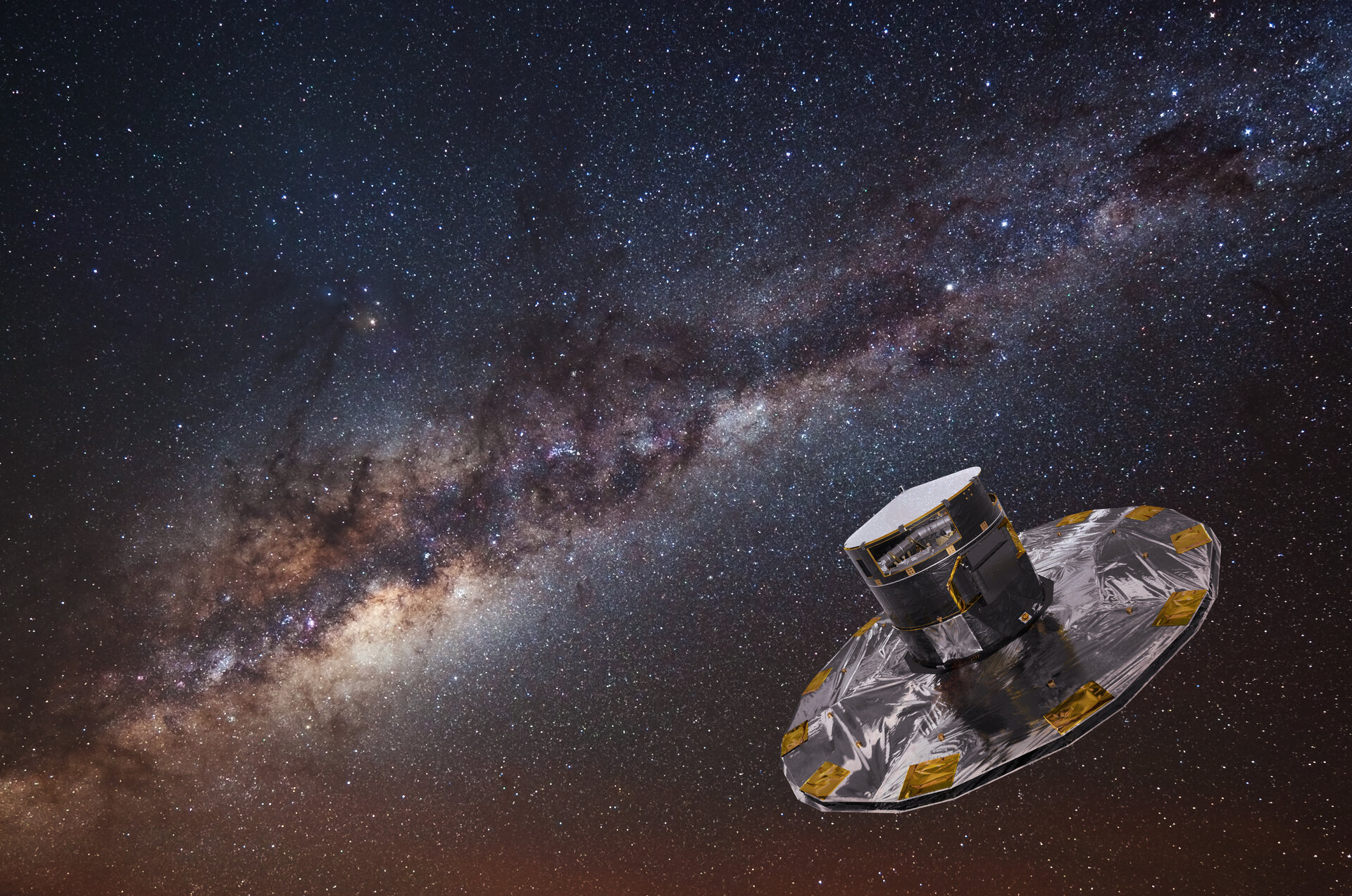ESA
The European Space Agency’s decade-old Gaia mission is in the process of mapping out the positions and velocities of more than 1 billion stars in the Milky Way. It’s not easy accomplishing this feat in space, and Gaia has recently faced down two large hurdles, but the spacecraft is now back to full operations.
In April, a micrometeoroid smaller than a grain of sand pierced a protective cover on Gaia’s telescope, allowing unwanted stray light to occasionally strike its detectors. Though the mission is no stranger to micrometeoroids, this one came in at high speed and at just the wrong angle.
Then, in May, a key sensor, part of the observatory’s billion-pixel CCD camera, failed. It was responsible for helping Gaia confirm that it was looking at a star. Without that sensor, the detectors began to register thousands of erroneous readings.
The sensor degradation occurred right after a massive solar ejection impacted the space weather environment of Earth on May 10th, wowing observers with low-latitude aurora worldwide. Although Gaia’s hardware is built to withstand space radiation, the spacecraft is aging, and the storm tested its limits.

Dave Dickinson
The key issue with both the stray light and the CCD sensor failure is that the spacecraft can generate many more false positive detections — seeing a star where there isn’t one — and that can overwhelm the system. The mission typically sends back more than 25 gigabytes of data every day, but it would be far more if the onboard computer didn’t first filter out the false stars.
Because ESA engineers cannot physically reach out and repair the spacecraft, they came up with a software-based solution. By simply changing the limit at which the software reports a dim point of light as a star, the system can reduce the amount of false detections even without the sensor. This solution has minimal scientific impact.
“The solution to keep Gaia operational in the end are such that there is only a minimal impact on the scientific performance,” says Prusti. “It is good to note that Gaia was all the time able to perform scientific measurements. The solution to the problems was to prevent false positives being gathered in the memory and getting downlinked.”
These problems even gave ESA engineers an unexpected opportunity to refocus the twin optics aboard Gaia, a first since the mission started. Now, engineers report that the mission is actually returning some of the highest-quality data of the entire mission.
Gaia: 10 Years and Counting
Launched in late 2013, Gaia has long passed its five-year nominal mission, having recently reached 10 years in space. Its main scientific priority is astrometry, or the precise measurement of the positions of stars on the sky. It also takes stellar spectra, measuring stars’ radial velocity, the speed at which stars travel toward or away from us.

ESA
The mission has revolutionized astronomy with its measurements of stars in the Milky Way, including our understanding of our galaxy’s history and the birth and evolution of stars themselves. Not only is the mission helping astronomers pin down stellar distances, but observations have also turned up quasars, exoplanets and asteroids.
Gaia’s home is at the Sun-Earth L2 Lagrange point, 1.5 million kilometers away from Earth. The spacecraft loops around this point as it orbits the Sun, as do the James Webb Space Telescope and ESA’s Euclid mission. (The loops of the various spacecraft differ, so there’s no risk of run-ins.)

ESA / M. Poussaut
“Gaia operations are nominal, and the spacecraft can cope with micro-meteoroids and normal solar wind without any problem,” says Gaia project scientist Timo Prusti (ESA). “The events a few months ago causing the troubles that now have been fixed were rather exceptional.”
However, he acknowledges that the aging hardware played a role: “[The troubles] might also be connected (to the fact) that Gaia has already been ‘bombarded’ during [its] more than 10 years in space. That is some four years longer than the engineering requirement.”
“These spacecraft issues and the next release . . . are not coupled,” says Prusti. The next catalog of Gaia data (known as DR4) includes data from the mission’s first few years and will be released around mid-2026, he says.
“The impact of these issue need to be taken care of in Gaia’s fifth data release,” he notes. “It will require some additional calibration work, but this is within the normal procedures already in place for Gaia.”
It’s great to see a crisis for a mission turned into an opportunity. Gaia may be aging, but the pioneering mission is far from down for the count.


